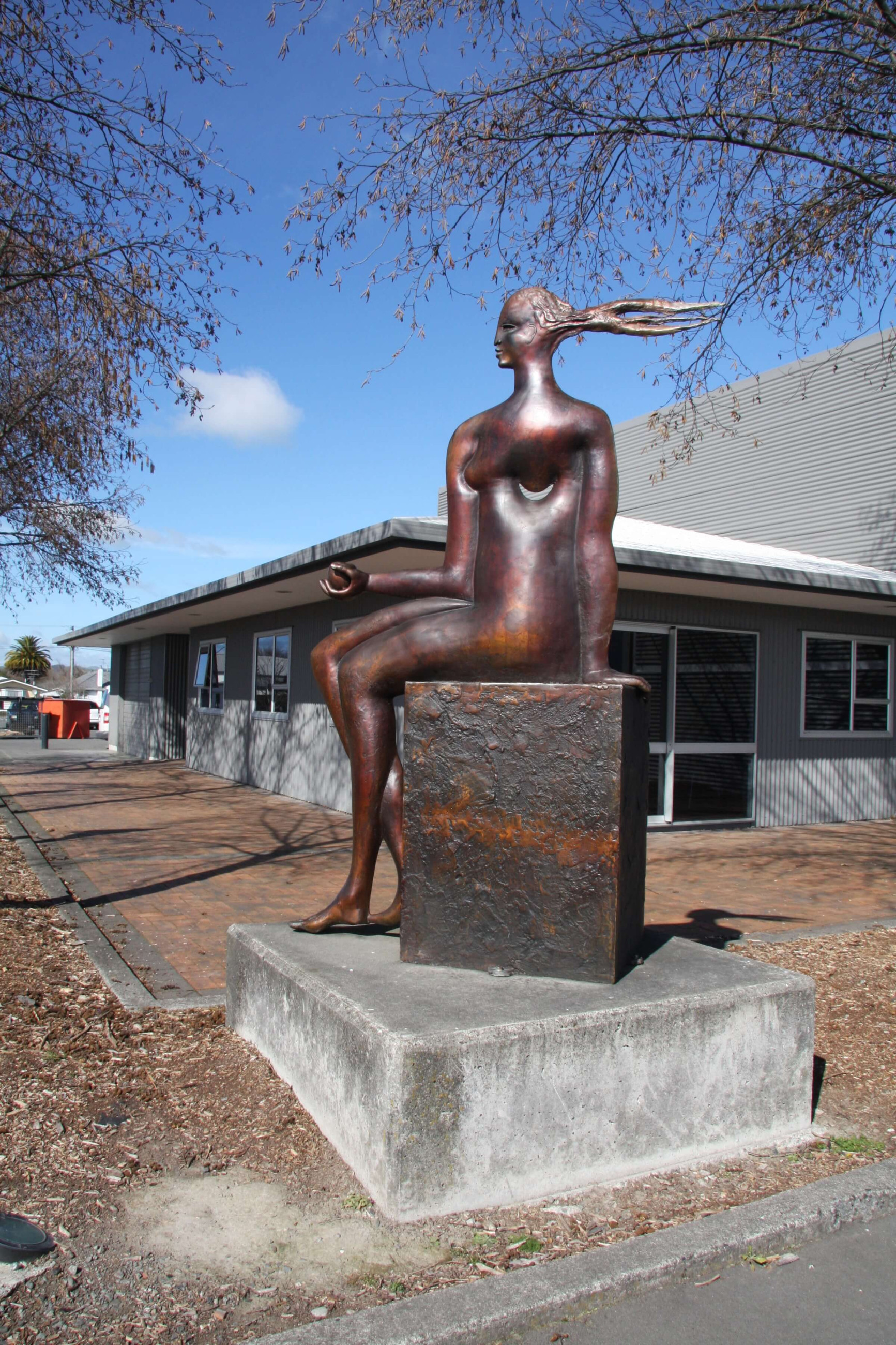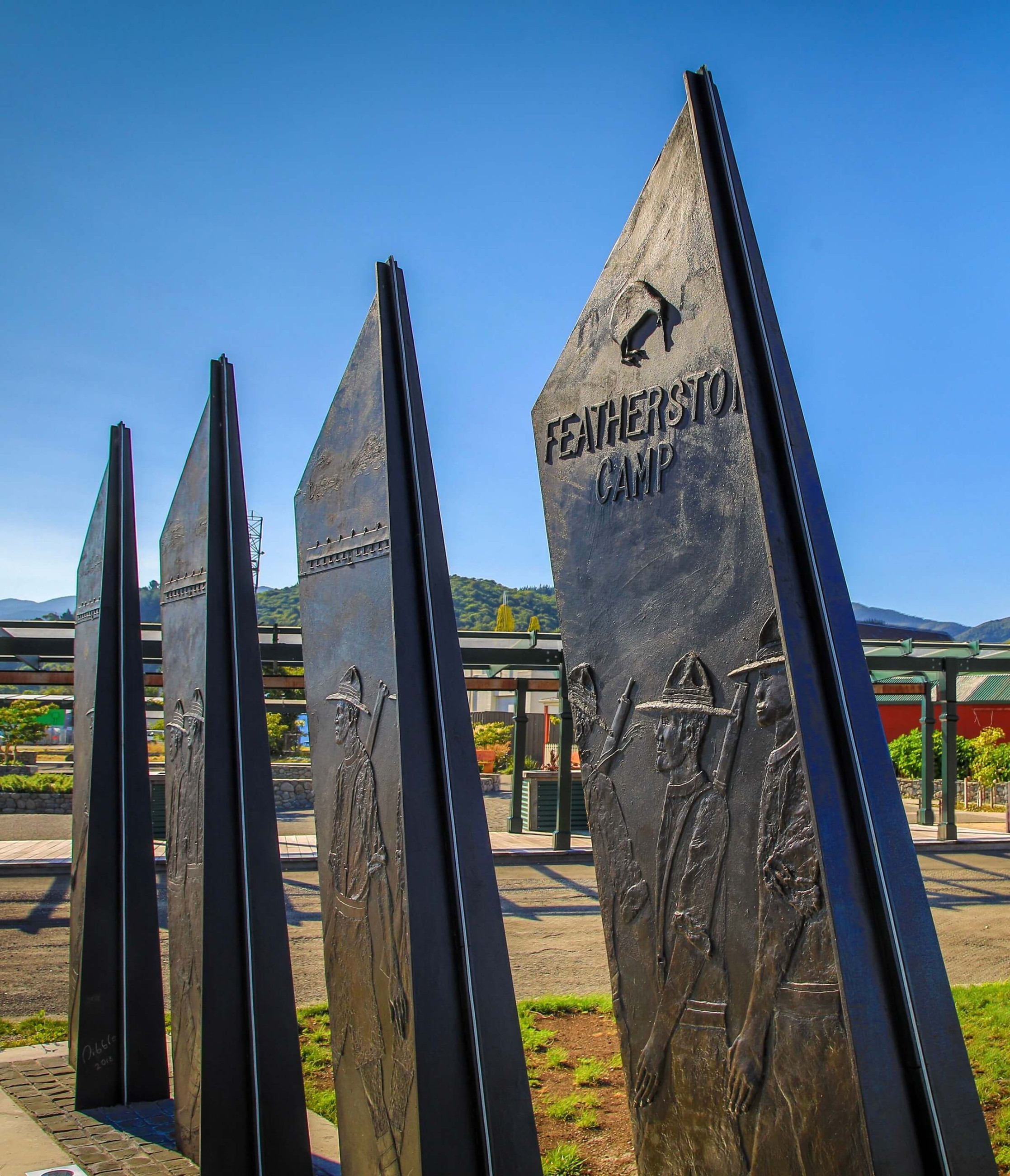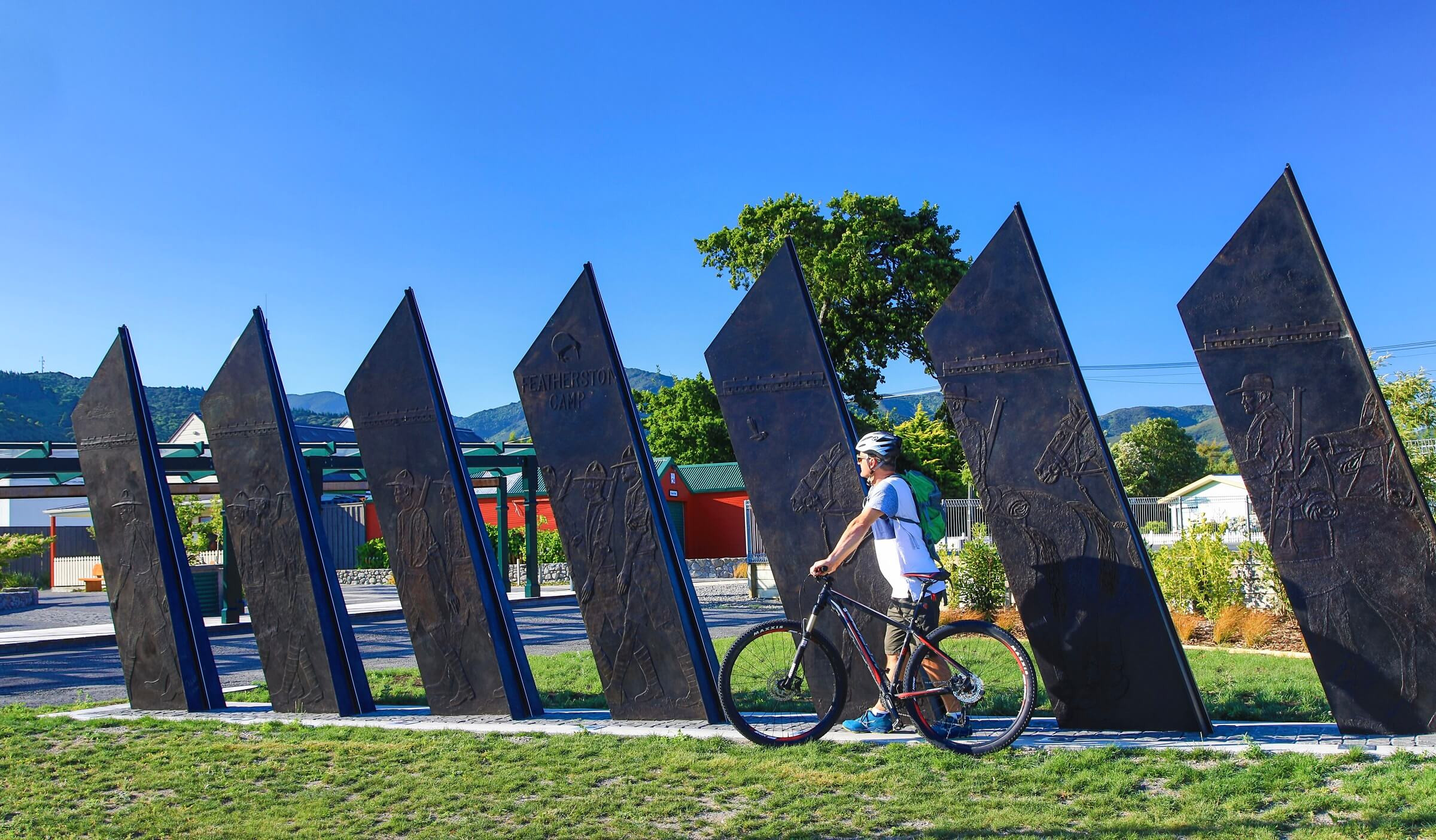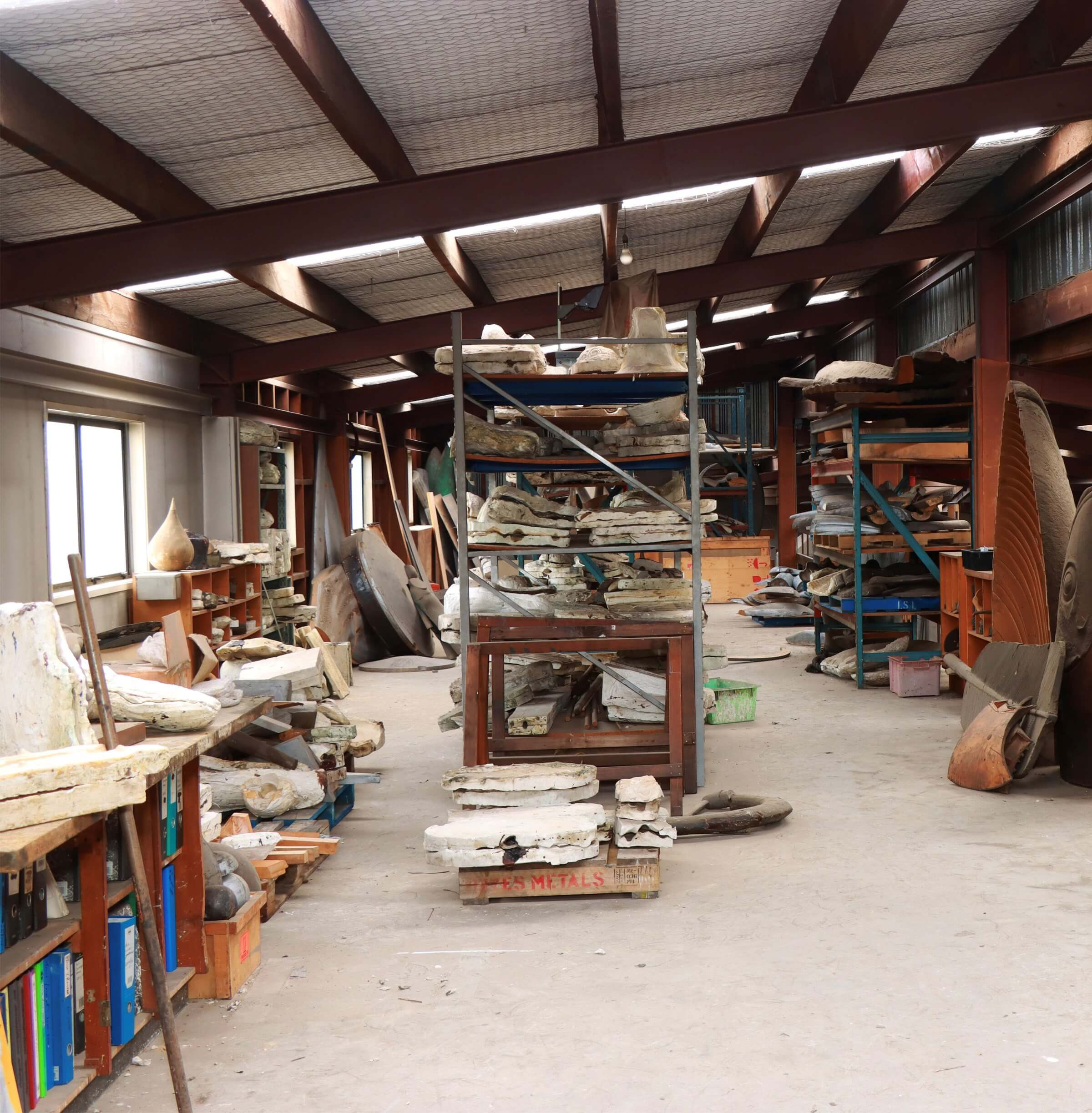Visit Sculptures in the Wairarapa
Visit Sculptures in the WairarapaGarden of Delights, 2001
Location: outside Moore Wilson supermarket, corner Smith and Queen Streets, Masterton
A series of gigantic nudes, or “seated figures” as they are often referred to, was part of Dibble’s oeuvre, dating from 1998. The ideas for these works drew from reference to the large nudes painted in the 1940s by Picasso (who showed an interest in art from non-Western sources, like the masks of Africa or the features of Pacific women), and in part from a referral to the etchings of Goya in his series illustrating the atrocities of war. Many of the early studies were made as models, of which several were scaled up to become large works.
The seated figures are monumental, not just large but with full solid forms. They sit atop a pedestal in a posture suggestive of isolation, contemplation, and serenity as if gentle giants viewing the land before them. Their presence seems to act as if guardians of a site, but likewise they give the atmosphere of someone pondering or watching some distant scene or landscape.
With Garden of Delights, as with many other works in the series, Dibble questions New Zealand’s position in the world. He uses the analogy of a paradisial garden, as plentiful provider of bounty. Purchased by Moore Wilson’s and located outside their establishment in Masterton, the figure’s outstretched arm holds an apple, as if offering it to some invisible companion.

Featherston Stand / He Tino Mamao (It's a Long Way), 2018
Location: 61 Fitzherbert Street, Featherston
Featherston might be a small town in New Zealand, but its historic significance is gigantic in terms of the war effort. In World War I it became the site of the largest military training camp in the country, Featherston Military Camp.
In 2014 a group of people from Featherston approached Dibble, wanting to commission a sister piece to Southern Stand, the New Zealand Memorial in London.
Fundraising for the sculpture was a big task, and it took some three years for the group to raise the money required.
The design of the sculpture for Featherston is deceptively simple as a structure: nine flat pillars mounted upright on a slight lean. The lean of each pillar suggests the angle at which a soldier might march when pushing forward into a headwind or up a hill slope (both in abundance on the Remutaka Hill, where the soldiers marched after finishing their training).
Information about the former military camp is spread across the pillars on one side. On the other side, facing the road, is a scene of the soldiers on their march, horses a notable part of the assembly. The soldiers depicted are recognizably Kiwi, very different in appearance from their manicured English counterparts. Most were farm boys in a conglomerate uniform, their faces intentionally portrayed on the sculpture as rugged and unique.
Lighting strips are connected to the back of each pillar, so that at night it appears as if the ghosts of the soldiers are still marching towards the Remutaka Hill (being the direction toward where the memorial points).
In 2018 the completed memorial was formally opened, on the day before the 100th anniversary of the Armistice of 11 November 1918.


